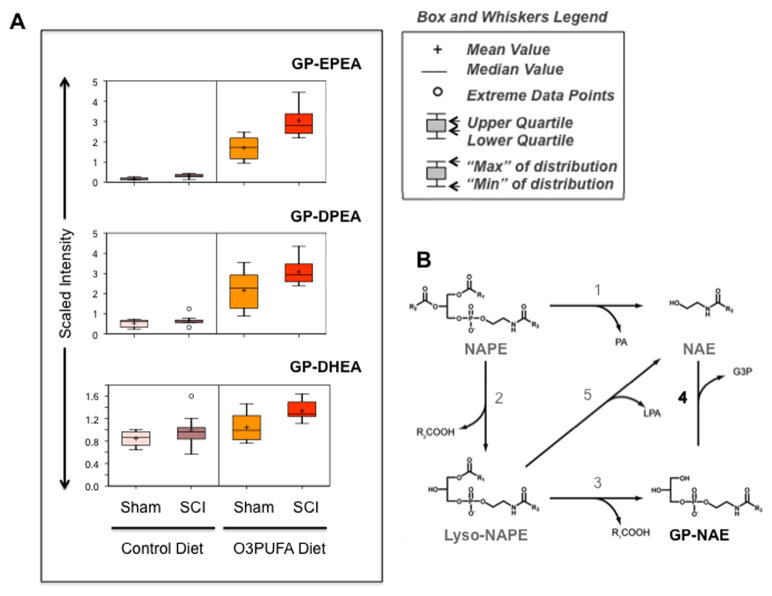Figure 4.
Chronic O3PUFAs consumption leads to a robust accumulation of diet-derived glycerophospho ethanolamines in the spinal cord. (A) Box and whiskers graphs illustrate a marked increase in the levels of O3PUFA-dervied GP-NAEs (relative to the median metabolite levels in each group). (B) Potential metabolic pathways for the biosynthesis of NAEs. This illustration is adapted and modified from previous reports (Simon and Cravatt, 2006, 2008). Reaction 1 is mediated by an NAPE-selective phospholipase D (PLD). Pathways 2-3-4 and 2–5 are NAPE-PLD independent. Recent studies suggest the involvement of a novel phospholipase A/B, named Abh4, α-β-hydrolase 4 in the NAPE conversion to GP-NAE (reaction 2 and 3). The secretory PLA2 can also release fatty acid from sn-2 position of NAPE (reaction 2). Reaction 4 is catalyzed by a new glycerophosphodiesterase, GDE1. Lyso-PLD catalyzes reaction 5. Abbreviations: DHEA, docosahexaenoyl ethanolamine; DPEA, docosapentaenoyl ethanolamine; EPEA, eicosapentaenoyl ethanolamine; GP, glycerophospho, NAE, N-acyl ethanolamine; NAPE, N-acyl phosphatidyl ethanolamine; G3P, glycerol-3-phosphate; LPA, lyso-phosphatidic acid; PA, phosphatidic acid.

